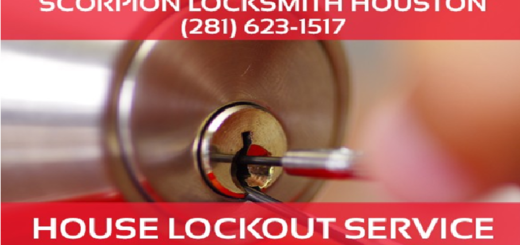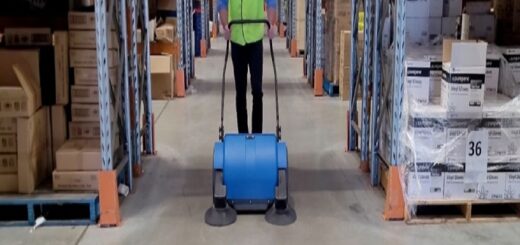What Are the Key Factors to Consider When Installing CCTV Cameras in UAE?
The UAE’s security infrastructure now includes a significant number of closed circuit television (CCTV) cameras. Businesses and property owners want to use surveillance systems to improve their security measures because threats are always changing. There are various important considerations for an efficient system when installing cctv camera installation dubai.
Types of cameras
Video footage coverage and quality will be influenced by the kinds of cameras used. Important options to think about are:
Fixed cameras: Cameras that are fixed to a specific location and keep an eye on it. With restricted field of view adjustment, they provide reliable surveillance.
Panning, tilting, and zooming cameras are referred to as pantiltzoom (PTZ) cameras. Operators can view various areas and concentrate on details thanks to them. more configurable but more difficult to install.
The discreet design of dome cameras, some of which have PTZ capabilities, makes them ideal for indoor surveillance. devoid of outdoor use weatherproofing.
The cylindrical, weatherproof design of bullet cameras makes them perfect for both indoor and outdoor use. fixed lenses in most cases, with PTZ available in some models.
The Place and Scope of the Coverage
How many and cctv installation companies in uae are placed will depend on the coverage requirements and location. Crucial elements consist of:
When observing distances and angles, take into account the mounting height, field of vision, and locations that need to be monitored, such as entrances.
Lighting: Infrared or night vision cameras might be necessary in low light situations.
Interior versus exterior: Outdoor cameras require vandalresistant casing and IP66 weatherproofing.
Increased camera density improves coverage, but it also necessitates larger infrastructure and video recorders.
Video and Image Caliber
To maximize recording quality, storage capacity, and expenses, CCTV cameras balance features:
Resolution: In order to capture greater quality and details, cameras with more megapixels need larger storage spaces. Two MP, five MP, and four K resolutions are typical choices.
Frame rate: 25 frames per second is standard, while 30 or 60 frames per second produce smoother video.
Varifocal lenses enable the change of focus and zoom for crisper video. Iris automation is useful in changing lighting conditions.
Compression: H.265 and other sophisticated codecs preserve video quality while consuming less storage space.
Maintenance, cybersecurity, and CCTV performance are all impacted by supporting infrastructure:
When it comes to networking, wireless transmission gives mobility while wired Ethernet delivers dependability. Installations are made simpler by power over Ethernet (PoE).
Surveillance is maintained during power outages by an Uninterruptible Power Supply (UPS) in the power system.
Video recorder: While cloud hosting permits remote access, on premise network video recorders (NVR) permit local storing. Length of retention should be compatible with storage capacity.
it structured cabling As opposed to WiFi, properly grounded coaxial or CAT5e/CAT6 cables reduce interference and improve cyber protection.
Protecting system electronics from lightning strikes should involve the use of isolation transformers, earthing, and surge protection.
Protection online
Proper precautions are essential in light of the growing cyber dangers.
End To End AES256 encryption for data: When video data is transferred and stored, it should be encrypted.
Control access to the system by requiring rigorous credentials for authorized personnel only. Multi Factor authentication should be enabled.
Segmenting the network to limit breach threats: Use VLANs to isolate the CCTV network.
upgrade firmware: In order to fix vulnerabilities, upgrade camera and VMS firmware as soon as possible.
Activity tracking: Look over system reports and video records to find any illegal alterations.
Preservation and Archiving
High Quality video can be archived for future use in investigations when there is sufficient storage capacity. Important components consist of:
Duration of retention: Depending on the needed retention period—15 days, 1 month, 3 months, etc.—the amount of storage space needed for videos. Each emirate has a different mandatory retention period.
Expandability: Choose scalable storage options that include the option to integrate cloud storage or add more hard drives for growth.
Redundancy: To ensure fault tolerance, maintain backup storage that is equal to the primary capacity. If the primary storage fails, footage can be retrieved thanks to this.
Archival storage: After the retention term, valuable video can be saved to less expensive media such as detachable network drives or optical discs.
Alarm System Integration
Enhancing security through greater monitoring is possible when CCTV is integrated with intruder alarm systems.
alert triggered recording: Cameras may be programmed to begin recording automatically in response to an intrusion alert, labeling the video appropriately.
Push notifications: Manager cellphones can get instantaneous push notifications, including videos and alerts about alarm events.
Verification of alarm occurrences visually: Operators can confirm incidents visually through live or recorded video feeds prior to sending out emergency personnel. lowers the false dispatch rate.
Automated alerts: Vibrant building alarms may be activated by suspicious events identified by video analytics, such as obstruction of cameras, lingering, etc.
Training for Stakeholders
Broad training and protocols allow a variety of CCTV operators to react appropriately in an emergency:
Monitoring staff: Provide security control room employees with the necessary training to use deployed surveillance infrastructure to proactively detect, verify, and address security events.
First responders: Give law enforcement the system credentials and tutorials they need to easily access the footage they need for investigations.
Privacy officers: Train internal staff on handling requests for subject rights and assisting with outside data protection audits.
Administrators: improve your knowledge of controlling user access, storing video, responding to cyberattacks, and other aspects of system administration.
Constant Supervision
Proactive management maintains system value, security, and health by allocating staff and creating budgets for it.
IT and security personnel should designate skilled workers to keep an eye on CCTV systems and use networked workstations to report incidents.
Service budgets: Set aside yearly funds for security integrators with the necessary qualifications to perform preventive maintenance.
Plan frequent upgrade cycles in accordance with the most recent technological developments, cybersecurity breakthroughs, and shifting requirements for monitoring.
Reviewing CCTV operations and incident records with important internal stakeholders on a regular basis is a good idea. Verify ongoing adherence to the specifications.
Conclusion
Staffing employees from different stakeholder groups develops organizational skills and maximizes the benefits of the well thought out CCTV deployment. In order to improve real world performance and better secure people, property, and information assets, purposeful instruction is added to technology. Thus, regular user training is an essential component of thoughtful system design that enhances security results.



